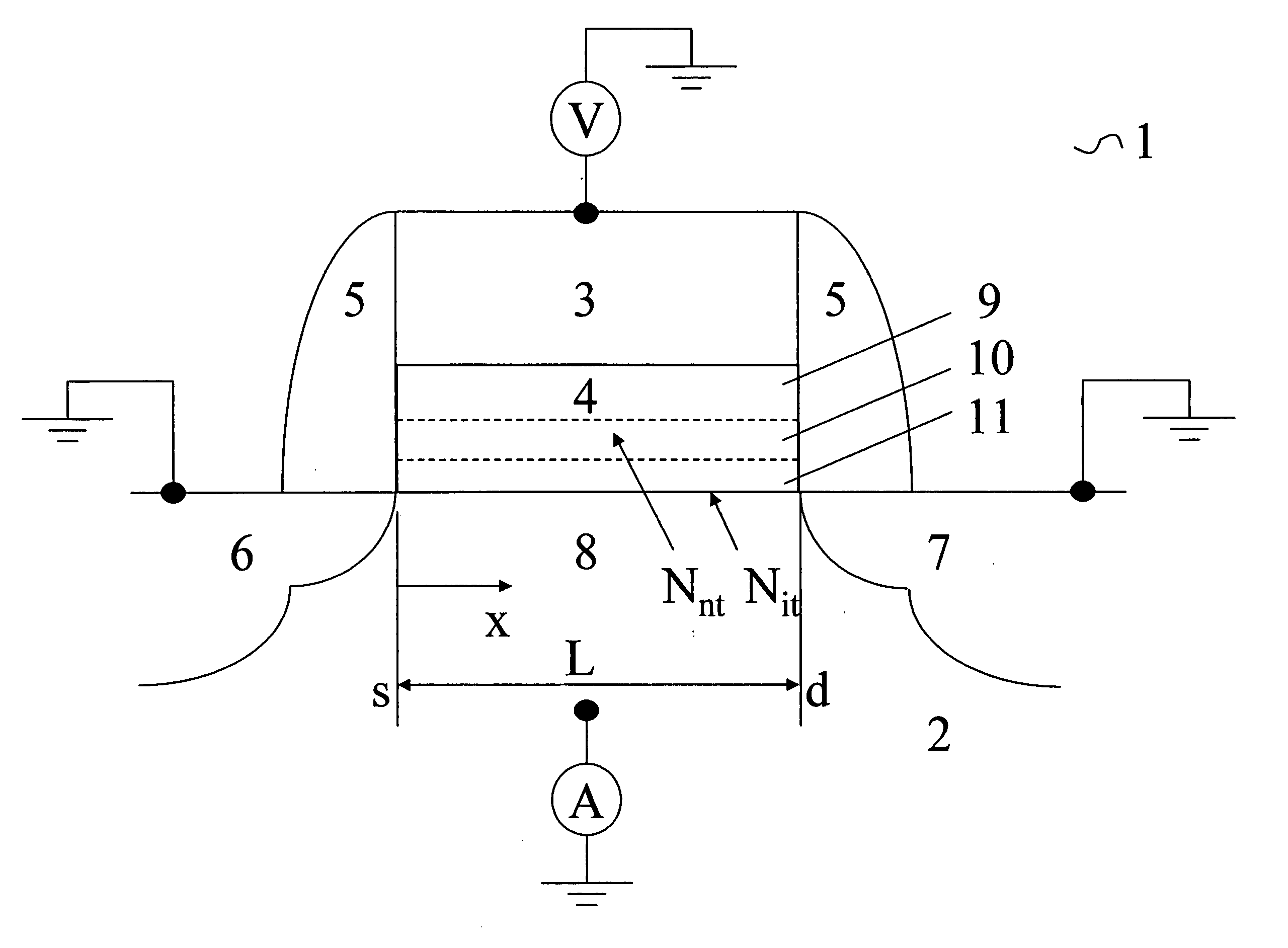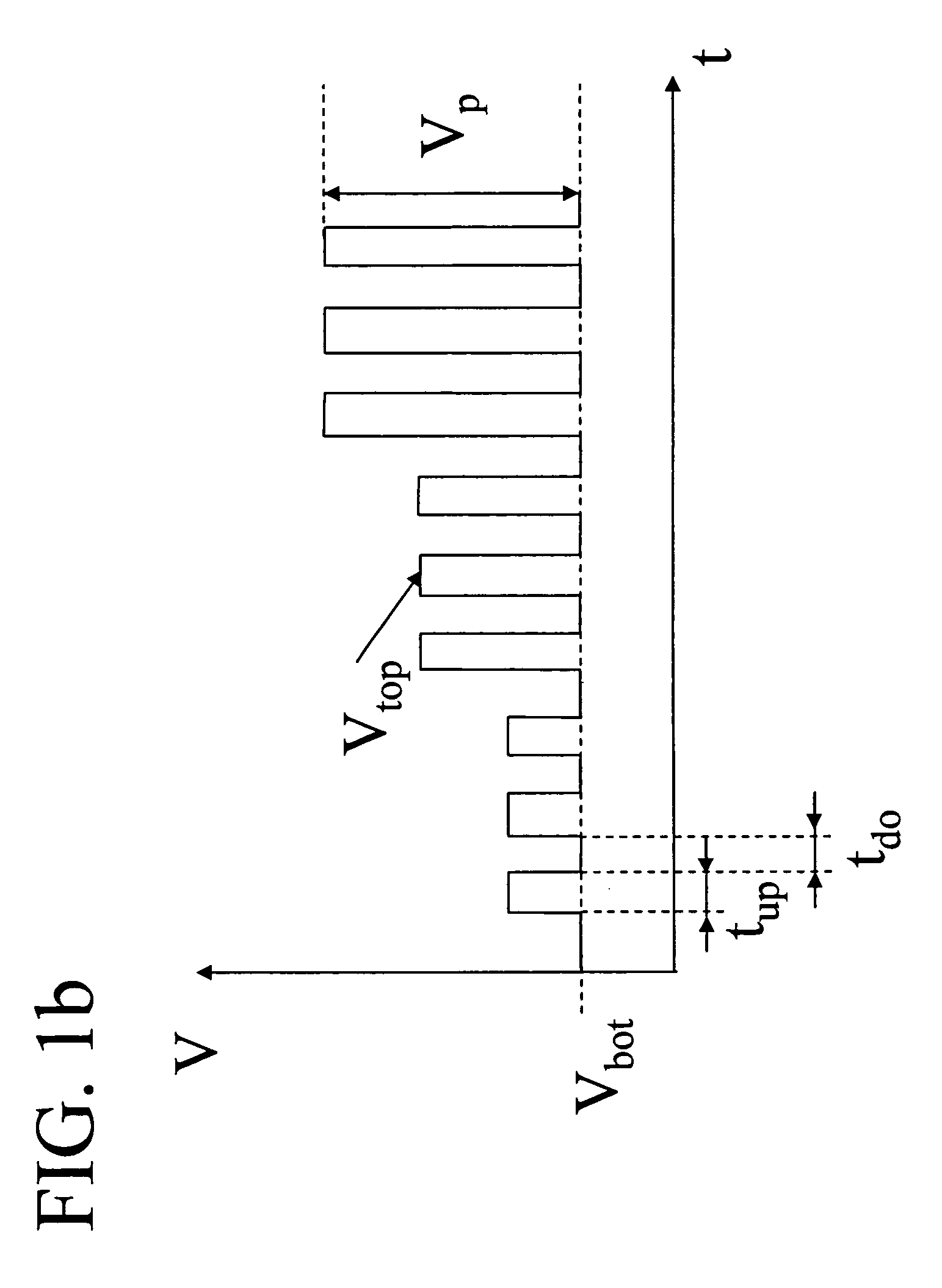Method for operating a non-volatile charge-trapping memory device and method for determining programming/erase conditions
- Summary
- Abstract
- Description
- Claims
- Application Information
AI Technical Summary
Benefits of technology
Problems solved by technology
Method used
Image
Examples
Embodiment Construction
[0035] As described with reference to FIG. 1-8, a set of programming and erase conditions for operating a semiconductor device, preferably a non-volatile memory device comprising a charge-trapping layer, is determined.
[0036]FIG. 1 shows a schematic cross-section of such a semiconductor device, namely a MOSFET-type device. This device (1) comprises a gate electrode (3) separated from the substrate (2) by a gate dielectric (4). Typically the gate electrode is formed from a semiconductor material such as polycrystalline silicon doped to obtain the desired workfunction and / or conductivity. This semiconductor material can be partially or fully silicided as known in the art or even metals, e.g. Al, TiN, TaN, are used. The gate dielectric (8) comprises a dielectric charge-trapping layer (10) such as silicon-nitride, silicon-rich oxide, silicon-oxynitride, an oxide layer comprising nanocrystals of a semiconductor material, e.g. polycrystalline silicon. Optionally this charge-trapping layer...
PUM
 Login to View More
Login to View More Abstract
Description
Claims
Application Information
 Login to View More
Login to View More - R&D Engineer
- R&D Manager
- IP Professional
- Industry Leading Data Capabilities
- Powerful AI technology
- Patent DNA Extraction
Browse by: Latest US Patents, China's latest patents, Technical Efficacy Thesaurus, Application Domain, Technology Topic, Popular Technical Reports.
© 2024 PatSnap. All rights reserved.Legal|Privacy policy|Modern Slavery Act Transparency Statement|Sitemap|About US| Contact US: help@patsnap.com










